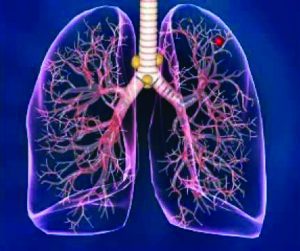Edgardo Soto De La Rosa, M.D.
 Cancer of the lung and bronchus is affecting a staggering number of the population with no sign that the increase will stop – with the increased use of filtered cigarettes, radon and secondhand smoke. Physicians and scientists continue to research and develop new detection methods for lung cancer and other lung diseases, which have resulted in advanced technology.
Cancer of the lung and bronchus is affecting a staggering number of the population with no sign that the increase will stop – with the increased use of filtered cigarettes, radon and secondhand smoke. Physicians and scientists continue to research and develop new detection methods for lung cancer and other lung diseases, which have resulted in advanced technology.
You’ve been told you have a spot on your lung. Or a lung nodule. Or a lung mass. You have many questions but first you need a lung biopsy.
What is a lung biopsy?
Physicians need to take a tissue sample or biopsy in order to make an accurate diagnosis. It may sound scary but finding spots on your lung when they are small may have advantages. There is research that shows most small lung spots turn out not to be cancer and could be an infection or scar tissue from a previous infection.
How does the doctor get the lung biopsy?
Traditionally doctors used a procedure called bronchoscopy where a thick but flexible tube called a bronchoscope is used to examine the inside of the air passages and take a small tissue sample for analysis. Standard bronchoscopies only allow doctors to reach spots that are close to the main airways.
“The airway system is like a big tree and with traditional bronchoscopy, we only had the capability to see main branches. It would not allow us to advance the scope and see the smaller branches, or any lesions that were less than 1cm,” explains Edgardo Soto De La Rosa, MD.
New Technology Allows for Better Access to Smaller Lesions
Today, Bayfront Health offers a navigation system used to perform Electromagnetic Navigation Bronchoscopy (ENB) procedures that can access distant regions of the lung.
“This new technology aids in early diagnosis and can help your physician plan your treatment. As with any cancer, the earlier we can detect the cancer and remove it, the greater the rate of survival is,” says Dr. Soto.
Electromagnetic Navigation Bronchoscopy (ENB)
Dr. Soto describes ENB as, “A GPS-like technology that combines advanced imaging techniques with electromagnetic navigation that can detect the smallest of tumors deep inside the lungs or in areas that are not reachable using traditional bronchoscopy. Performed in an operating room setting,”
ENB enables minimally invasive access to distant tumors by advancing a scope or catheter through the mouth, down the natural airway and into the some of the most outer regions of the lung and smaller bronchi or bronchi that may be blocked by a tumor.
With access to these hard-to-reach areas by using ENB, pulmonologists can biopsy lesions, stage lymph nodes and insert markers to guide future treatment, providing early diagnosis and more comprehensive information to plan a course of treatment.
Dr. Soto expressed how well the ENB is helping to doctors get a clearer of picture of the airways that they could not see before. “This technology is amazing. It allows us to accurately detect, stage and remove lesions better than ever before.”
The ENB is typically an outpatient procedure and many patients are able to go home the same day with minimal discomfort. Its unique approach may increase the chances that patients will receive a timely and accurate diagnosis enabling them to begin immediate treatment, if needed.
ENB has the ability to detect lung disease and lung cancer in its early stages, even before symptoms are evident, enhancing treatment options for patients.
Historically, patients with a spot or lesion on their lung had the option of major surgery to remove a section of the lung, bronchoscopy (which does not reach lesions deep in the lung), needle biopsy, or watchful waiting. Many of the surgical options today can be used only in patients who meet certain criteria. However, ENB can be used with a broad group of patients, even those who are not suitable for other surgical techniques.
As Dr. Soto stated, for the greatest chance of survival, it is crucial to detect cancer in early stages. The ENB allows doctors to see smaller airways and detect smaller lesions and in turn diagnose lung cancer in early stages, resulting in up to a 90% survival rate for patients.
To learn more and see a video on this new procedure, visit: http://bit.ly/Detection_Prevention.







